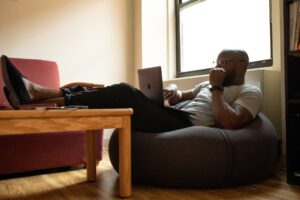After a strange summer that included social distancing, quarantining, and hoarding huge amounts of toilet paper, the last few months in school have taken some getting used to. A less active lifestyle probably included among the adjustments.
With a new school year comes more physical engagement. Sports and extracurricular activities have begun, but since late winter, life for most has been far from active. Many people have been spending their days inactive, sedentary, and staring at screens.
Kids’ bodies are not immune to injury. There’s a misconception that they can return directly into intense physical activity without risking injury. Of course, the adult body is not immune to an active lifestyle injury either.
Bringing the body back to an active lifestyle is not something that happens overnight. If you don’t ease back into an active lifestyle, activity-related injuries can occur.
Returning to fall sports after staying at home during a pandemic hasn’t been like years past.
In this blog, we are going to discuss the strategies that can save kids and adults from unnecessary injury and pain due to sports or other physical activity.
Ease in, and Condition the Body Properly
It’s important to not force your body into physical duress prematurely. Coaches should not force athletes to push their bodies too hard in early training either.
Running wind sprints and powerlifting on the first day of football practice is not going to get the coaching staff the results they desire. Players could end up with neck, back, knee, and shoulder injuries. Nagging pains will cost the team in recovery time. The body’s muscles, joints, cartilage, and tendons are not as strong or pliable after sitting dormant for months.
It’s understandable to be anxious to workout as COVID-19 restrictions ease in areas of the country. It is obvious people are craving a workout. Just look at how dumbbells for home workouts are sold out everywhere! But don’t put your body (or others) at risk.
Be patient, and listen to the signs the body is telling you.
Set Goals
A good way to pace your transition back into an active lifestyle is to have an exercise plan and schedule for yourself. Success is found by parsing out your activity and strategizing how you push your body day-to-day. It’s important not to be aimless with your exercise routines.
Marathoners do not try and run 26.2 miles on their first day of training. This philosophy is relevant to all types of conditioning and exercise. By plotting out incremental goals, athletes are more likely to stick with routines and find success. Injuries are also less likely to occur.
Involve some level of data tracking and gain insights from your efforts. Injuries occur from overexertion when the fitness level is poorly understood. Help the body by pushing and progressing it forward based on data and strategy.
Have an Accountability Partner
For team training and conditioning, accountability is shared between players. If you’re exercising on your own, it’s great to have an accountability partner to help you stick with your goals and keep you on track.
An accountability partner is a like-minded individual looking to achieve their physical fitness and active lifestyle goals. Whether you and a friend are trying to lose weight, run a fast mile, or climb to a higher elevation – it’s easier to achieve when you have another person hold you accountable.
Listen To Your Body
There’s a misguided notion that you need to “push through the pain” and force your body to strenuous exercise, even if it’s telling you to stop. This is not an advisable or sustainable way to introduce yourself back into an active lifestyle.
Sure, we all must push through some “pain” when conditioning our bodies. But, sharp, awkward, and unexpected pain is a sign that something is being pushed too hard, and an injury may have occurred. By listening to your body, you decrease the risk of forcing an injury.
The hardest part of maintaining an active lifestyle is learning to listen to your body. Avoiding a visit to your physical therapist because you think that knee pain will just “go away on its own” is a BAD IDEA. It’s like not seeing the dentist because you think your cavity will go away on its own. There’s no shame in being aware and taking care of your body.
Easing Back Into An Active Lifestyle? Make Sure You Do It Right.
No matter your age or fitness level, it is wise to consult your doctor before training your body, playing sports, or changing your exercise routine. You shouldn’t be afraid of exercise, and all of us need it, but be cautious about how you “get back on the saddle.”
If you’ve recently gotten back into an exercise routine and you feel aches, pains, and discomfort where you had not before, please contact us. We’ve seen all types of activity and sport-related injuries, and we will be happy to help.
You can book a discovery visit for free and learn more about the best ways to partake in a healthy and active lifestyle, pain-free.


